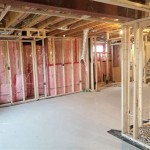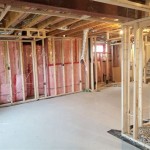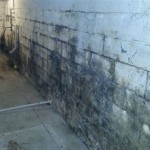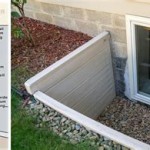R-Value for Basement Ceiling: Essential Considerations
The R-value of your basement ceiling is a crucial factor that influences the energy efficiency and comfort of your home. Understanding this value and its importance can help you make informed decisions regarding basement insulation and ensure a cozy and cost-effective living space.
What is R-Value?
R-value is a measure of a material's resistance to heat flow. The higher the R-value, the more effective the material is at insulating and preventing heat loss or gain. For basement ceilings, a higher R-value is preferable as it reduces heat transfer from the basement to the upper levels of the house.
Factors Affecting R-Value
Several factors can affect the R-value of a basement ceiling, including:
- Type of Insulation: Different insulation materials have varying R-values per inch of thickness. Common options include fiberglass batts, cellulose, and spray foam.
- Thickness of Insulation: The thicker the insulation layer, the higher the R-value.
- Air Gaps: Air gaps between the insulation and the ceiling or walls can reduce the overall R-value.
Recommended R-Value for Basement Ceilings
The recommended R-value for basement ceilings varies depending on the climate zone and the building codes in your area. However, a minimum R-value of 19 is generally suggested for most regions in the United States. This R-value can effectively minimize heat loss and improve energy efficiency.
Benefits of a High R-Value Basement Ceiling
Installing insulation with a high R-value for your basement ceiling offers several benefits:
- Reduced Energy Costs: By preventing heat escape, a well-insulated basement ceiling reduces the amount of energy required to heat your home, resulting in lower utility bills.
- Improved Comfort: Controlling heat transfer between the basement and the upper levels of the house creates a more comfortable living environment year-round.
- Moisture Control: Insulation can help prevent condensation and moisture buildup in the basement, which can lead to mold growth and other problems.
Choosing the Right Insulation
Selecting the appropriate insulation for your basement ceiling depends on factors such as cost, ease of installation, and environmental friendliness. Consider the following:
- Fiberglass Batts: A cost-effective and widely available option with a moderate R-value per inch.
- Cellulose: Made from recycled paper, cellulose has a higher R-value than fiberglass but is more susceptible to moisture.
- Spray Foam: A professional-grade insulation with the highest R-value per inch but also the most expensive option.
Installation Tips
To ensure maximum R-value and effectiveness, follow these installation tips:
- Fill Cavities Completely: Ensure that insulation fills all cavities without any gaps or air pockets.
- Avoid Air Gaps: Seal any gaps around pipes, wires, and other penetrations to prevent heat loss.
- Consider Vapor Barrier: Installing a vapor barrier between the insulation and the drywall can help prevent moisture from entering the insulation.
Conclusion
Investing in a high R-value for your basement ceiling can significantly improve the energy efficiency, comfort, and overall livability of your home. By understanding the factors that affect R-value and choosing the appropriate insulation, you can optimize your basement space and enjoy a more comfortable and economical indoor environment.

Know Your R Value The House Designers

What R Value Do I Need Johns Manville

Doe Insulation Values Corresponding Chart From For R Basement Ceiling Home

All About Insulation R Values The Home

Insulation Levels For Cold Hot And Moderate Climates

What R Value Insulation Do You Need For Basement Ceiling

New York Recommended Home Insulation R Values Zone 4

Envelope Pa Energy Code

What Is R Value Insulation Tampa Florida Fl

How Much Insulation Does Your Home Need Guide








